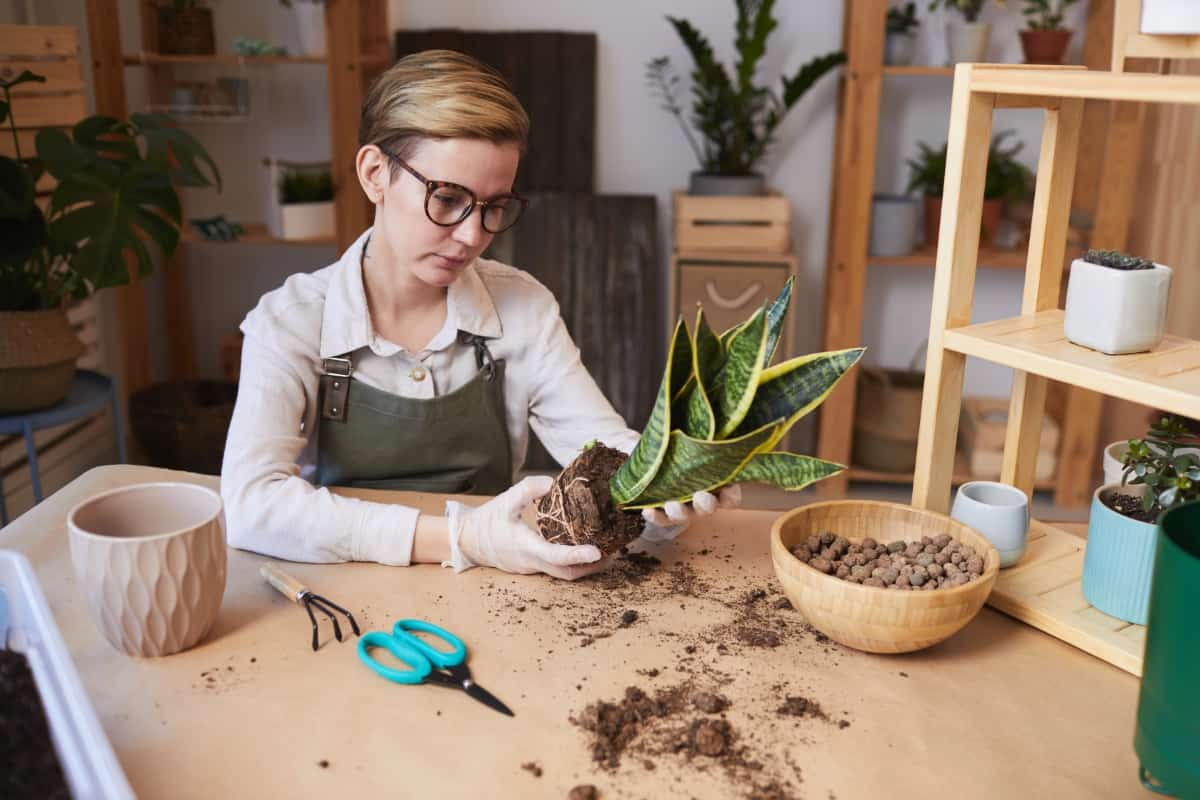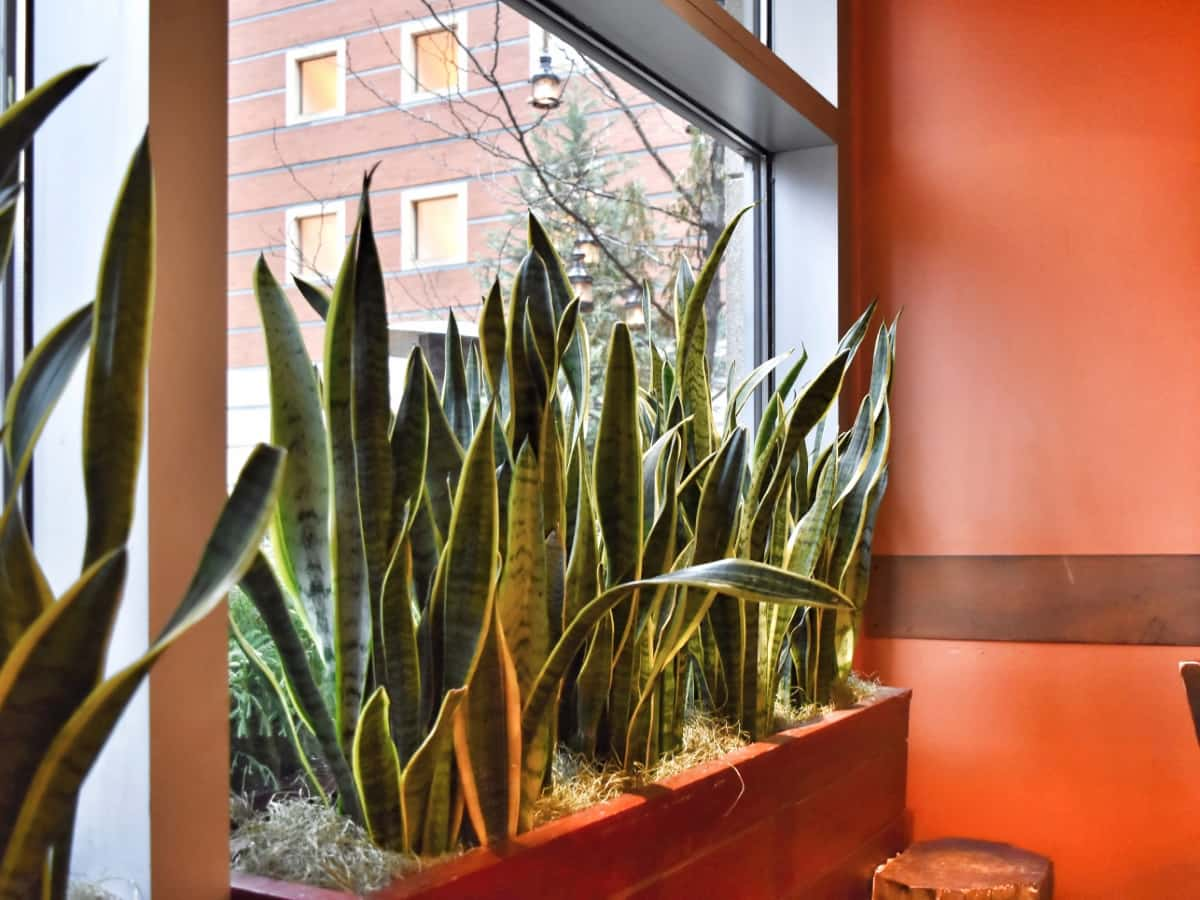A drooping Snake plant can be caused by various factors such as overwatering, underwatering, inadequate light, or poor soil conditions. By promptly identifying and addressing the specific cause, you can revive your Snake plant and restore its upright posture. Provide adequate sunlight for your Snake plant but avoid direct exposure to harsh afternoon sun rays. Regularly inspect your Snake plant for symptoms of pests or diseases and take appropriate measures. Your drooping Snake plant will regain strength and vitality with proper care and attention.

Introduction to Snake Plant Drooping
Snake plants are popular houseplants admired for their striking foliage and easy-care requirements. Why is my Snake plant drooping? Snake plant drooping can occur due to various factors, including environmental conditions and care practices. To understand why Snake plants droop, it’s important first to grasp their anatomy and physiology.
Snake plants have thick succulent leaves that store water reserves, making them well-equipped to withstand periods of drought. However, excessive moisture or lack thereof can disrupt this delicate balance and lead to leaf drooping. Environmental factors such as overwatering or underwatering can directly impact the health of your Snake plant. Soil composition plays a significant role in maintaining optimal drainage for Snake plants.
If the soil retains too much water or lacks proper aeration, it can suffocate the roots and contribute to leaf sagging. Light requirements also play an essential role in maintaining healthy growth patterns for Snake plants. Temperature fluctuations and humidity levels should not be overlooked when addressing droopy Snake plant issues. Nutrient deficiencies or imbalances within the soil can manifest through symptoms like yellowed or shriveled leaves, eventually leading to overall decline, including leaf sagging.
Overwatering and Underwatering: Impact on Snake Plant Drooping
Overwatering can cause Snake plants’ root rot and other moisture-related problems. When the soil remains constantly wet, it deprives the roots of oxygen and suffocates them. As a result, the leaves may become soft and mushy, eventually leading to drooping. On the other hand, underwatering can also cause Snake plants to droop. When they don’t receive enough water, their leaves will lose turgidity and appear wilted or limp.
Underwatered Snake plants may also show signs of yellowing or browning leaf tips. Finding a balance in watering frequency and amount is crucial to prevent overwatering or underwatering your Snake plant. Furthermore, proper drainage is essential when watering Snake plants correctly. Every environment is different; temperature, humidity levels, pot size, and soil composition will also influence your watering schedule.
Soil Composition and Drainage Issues: Effects on Snake Plant Health
Soil composition and drainage play a crucial role in the health of Snake plants. These factors impact their growth and can lead to drooping leaves if not properly addressed. One key aspect to consider is the type of soil used for Snake plants. They thrive best in well-draining soil, allowing excess moisture to flow easily. Sandy or loamy soils are ideal as they prevent water from sitting around the roots, which can cause root rot.
On the other hand, using heavy clay soils or dense potting mixes with poor drainage can suffocate the roots and result in waterlogged conditions. This prevents oxygen from reaching the roots, leading to wilting and drooping leaves. Adding materials like perlite or coarse sand to your potting mix to ensure proper drainage can help improve airflow and prevent waterlogging. Additionally, placing pebbles at the bottom of your pots can create a drainage layer that allows excess water to escape.
In case you missed it: Best Time to Repotting Snake Plant: Problems and Solutions After Repotting

Regularly checking your Snake plant’s soil moisture levels is essential in preventing overwatering or underwatering issues. It’s important to let the top inch of soil dry out before watering again, as too much moisture can cause root rot, while insufficient watering causes dehydration and leaf drooping.
Light Requirements and Exposure: Influence on Snake Plant Drooping
The amount of light a Snake plant receives can greatly impact its health and appearance.
Snake plants are known for tolerating low light conditions, making them popular indoor houseplants. They prefer bright, filtered light but can survive in moderate or low-lighting areas. On the other hand, if a Snake plant doesn’t receive enough light, it may start drooping and stretching toward the nearest natural light source.
This indicates that the plant is not getting sufficient energy from photosynthesis to support healthy growth. To ensure optimal growth and prevent drooping caused by inadequate lighting, place your Snake plant near a window that provides bright indirect sunlight throughout the day. If you have limited natural lighting available indoors, you can supplement with artificial grow lights specifically designed for indoor plants.
Temperature and Humidity: Impact on Snake Plant Growth
Snake plants thrive in warm temperatures and moderate humidity. Extreme temperature fluctuations can cause stress to Snake plants, leading to leaf drooping. High temperatures above their preferred range can result in wilting leaves, while low temperatures can slow their growth. Keeping your Snake plant away from drafts or areas with fluctuating temperatures is important.
Humidity is another factor that affects Snake plant growth. While these resilient plants can tolerate low humidity, excessively dry air can lead to dehydration and droopy leaves. On the other hand, high humidity levels may encourage fungal diseases or root rot. Aim for a temperature range between 15-29°C during the day and slightly cooler at night to maintain optimal conditions for your Snake plant. You can increase humidity by grouping houseplants or using a humidifier if necessary.
Nutrient Deficiencies and Imbalances: Causes of Snake Plant Drooping
Snake plant leaves bending can cause concern, as it indicates something is not quite right with your beloved houseplant. Snake plant leaves may start to bend or droop for several reasons, and understanding the causes can help you address the issue effectively. Nutrient deficiencies or imbalances can lead to drooping leaves and an overall decline in plant vigor. One common cause of nutrient deficiencies in Snake plants is improper fertilization.
Over-fertilizing or using the wrong fertilizer can disrupt the balance of essential nutrients like nitrogen, phosphorus, and potassium. This imbalance can manifest as yellowing or browning leaves, limp foliage, and poor overall growth. Additionally, inadequate soil composition can contribute to nutrient deficiencies. Snake plants thrive in well-draining soil that allows roots to access necessary nutrients.
Heavy clay soils or compacted potting mixes may hinder nutrient absorption by limiting root development. Another factor is the pH levels in the soil. Snake plants prefer slightly acidic to neutral conditions for optimal growth. If the pH is too high or too low, it can interfere with nutrient availability and uptake, leading to drooping leaves.
In case you missed it: Snake Plant Yellow Leaves: Possible Causes for Turning Yellow, Treatment, and Remedies

Furthermore, insufficient water-soluble micronutrients such as iron or magnesium can also result in Snake plant drooping. These micronutrients are vital for various metabolic processes within the plant’s cells. Without them, leaf discoloration may occur along with overall weakness.
Pests and Diseases: Factors Contributing to Snake Plant Decline
Pests and diseases can wreak havoc on the health and appearance of your beloved Snake plant. These unwelcome intruders can cause significant damage, leading to drooping leaves and an overall decline in the plant’s vitality. One common pest that affects Snake plants is spider mites. These tiny creatures may be difficult to spot, but their presence becomes evident as you notice a web-like substance forming on the leaves.
Spider mites feed off the sap of the plant, causing yellowing or browning of the foliage. Another troublesome pest is mealybugs. These white, cottony insects love to hide in hard-to-reach areas like leaf axils. They suck out the plant juices, leaving a sticky residue that attracts ants and promotes fungal growth.
Root rot is another issue that can contribute to Snake plant drooping. This fungal disease thrives in overly moist conditions caused by overwatering or poor drainage. Practicing good sanitation habits, such as regularly cleaning dust off its leaves, is important to prevent these pests and diseases from taking over your Snake plant. Additionally, avoid overwatering your Snake plant by allowing its soil to dry out between waterings.
Proper Care and Maintenance Practices for Preventing Snake Plant Drooping
One of the most common mistakes is overwatering. Snake plants prefer drier soil; only water when the top inch feels dry. How to fix Snake plant drooping? Ensure proper drainage by using a well-draining potting mix. These resilient plants can tolerate various conditions but thrive in bright indirect light.
They can handle lower humidity levels too. Feed the Snake plant with a balanced liquid fertilizer every few months according to the instructions on the label. Should I cut drooping Snake plant leaves? If you notice your Snake plant’s leaves drooping, you might wonder if cutting them off is right. Well, it depends on the severity of the drooping and the underlying cause. In some cases, trimming away the affected leaves can help redirect energy to healthier parts of the plant.
In case you missed it: How to Plant and Care for Snake Plant: Propagation to Growing Instructions

If your Snake plant has outgrown its container or shows signs of root boundness, consider repotting it in fresh soil during springtime. Snake plant drooping after repotting can be a common occurrence. Repotting is necessary to ensure the health and growth of your Snake plant, but it can also cause stress, leading to drooping leaves. By providing consistent care – including proper watering, sufficient light exposure, and allowing time for adjustment – you will give your Snake plant the best chance at recovering from drooping after repotting.
Conclusion
Various factors, including overwatering, underwatering, inadequate lighting, and pest infestations, can cause Snake plant drooping. Snake plants are popular houseplants known for their hardy nature and air-purifying qualities. However, it can cause concern when they start to droop. Understanding the possible causes of a drooping Snake plant is essential to provide the appropriate treatment and revive your beloved plant.
- Ultimate Guide to Ossabaw Island Hog: Breeding, Raising, Diet, and Care
- Ultimate Guide to Juliana Pig: Raising Facts, Size, Diet, Care, and Lifespan
- Raising Lleyn Sheep: Disadvantages, Price, Uses, Characteristics, and Care
- Ultimate Guide to Meishan Pig: Breed Facts, Breeding, Raising, and Care
- Ultimate Guide to Teacup Pigs: Raising, Diet, Lifespan, Cost, and Care
- Guide to Raising Poll Dorset Sheep: Facts, Profile, Characteristics, Uses, and Care
- Ultimate Guide to Bighorn Sheep: Characteristics, Diet, Lifespan, Breeding, and Lifecycle
- Ultimate Guide to Raising Katahdin Sheep: Farming Facts, Breed Profile, Uses, and Care
- Ultimate Guide to Raising Oreo Cows: Belted Galloways Farming Facts, Profile, Uses, and Care